An average US smartphone user gets 46 pushes every day. The medium opt-in rate for this format is high for both Android (81%) and iOS devices (51%), meaning that people are actually loyal to such kinds of notifications and voluntarily subscribe to them. Besides, pushes feature one of the highest CTRs (4.6% and 3.4%, respectively) with the same reaction rates, which is pretty decent.
As you can see, interweaving push notifications traffic into ad campaigns can help you drive conversions and, as a result, income. But how to launch such campaigns in the most effective way? This article is here to answer this and other questions.
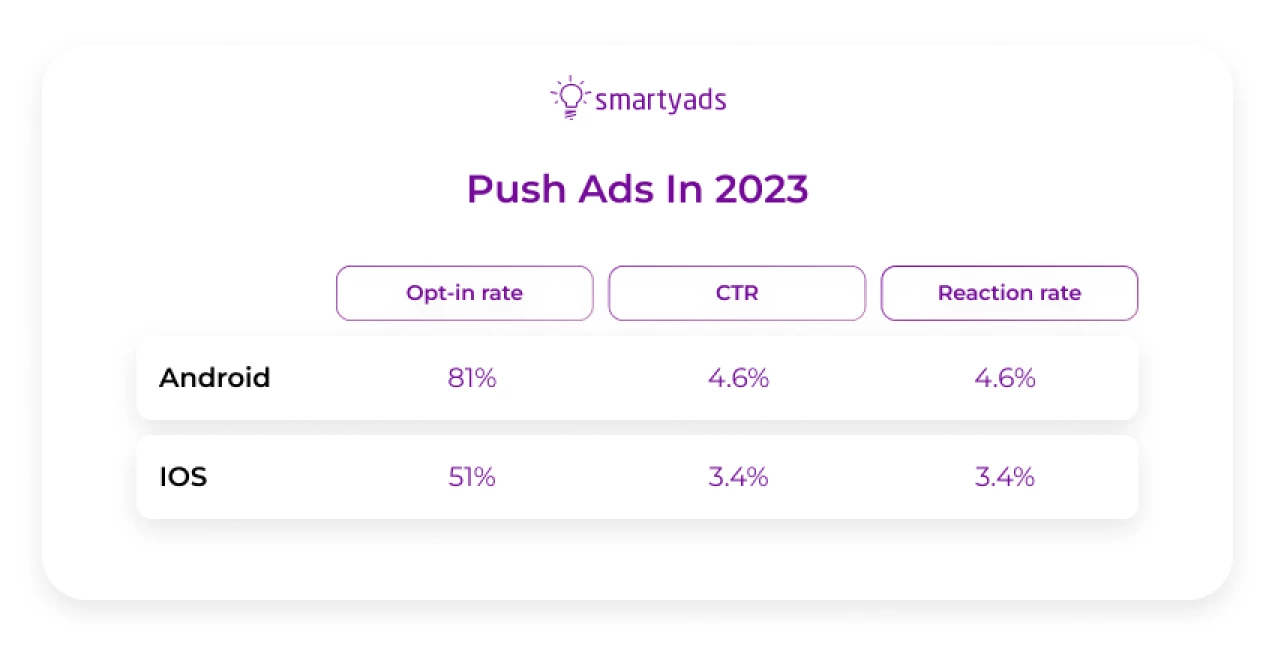
What is push traffic?
Push traffic quickly gains recognition because of its affordability and high-quality, human-generated impressions. To clarify the push traffic meaning, let’s review two notification types.
- Mobile. The ad arrives at the user screen as a notification from the application. It automatically appears on the lock screen, but to receive it, the user has to enable notifications on the gadget first.
- Browser. These are cross-platform notifications coming from websites where the user has enabled a subscription. They typically deliver website news and integrate into the web browser after the consent is given.

What do these ad units look like?
Push ads often resemble system notifications (mobile or browser) and include three essential elements: text, media content, and buttons.
- Text. Usually, the text does not occupy a big part of the push, containing only a couple of lines, approximately up to 250 characters. Instead, the ad includes a link that leads the customer to the main page with an offer that contains a full description.
- Media content. It can be a picture, GIF, or video. Pushes can be implemented just with text, but media content will make the ad visually attractive. For iOS, all media content must be pre-loaded into the application.
- Buttons. If necessary, you can integrate buttons in your ads for convenience. The buttons will help the user to act fast upon the offer: go to the app, apply a discount, or share the news with a friend.
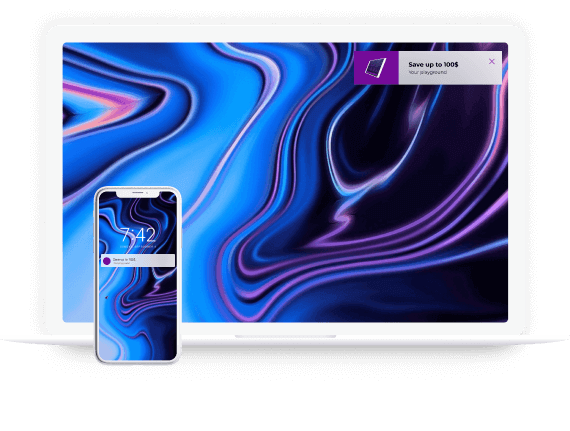
Both types of push traffic can suit a multitude of advertising purposes, from direct advertising to content delivery. Even though mobile and browser pushes are designed for different environments, launching an ad campaign on both is easy. Although previously it was an absolute must to have an app to start a mobile push campaign, now it is possible to obtain mobile push ads traffic from affiliate campaigns.
What are push notifications for affiliate marketing?
Here is the essence of affiliate programs: after push technology is integrated into the app, it can send pushes with offers. However, the app publisher can send them to the same pool of users on behalf of different advertisers. Customers, in turn, receive notifications with links that lead to the target (advertiser’s) landing.
Since users understand which app sends them notifications, they trust it and do not ignore incoming ads. This is one of the most significant advantages of affiliate marketing for those advertisers who can’t afford to build their own apps.
The image below shows that dynamic and segmented notifications have the highest open rate (almost 9%). The second place is occupied by dynamic broadcasts (over 6.5%). Segmented pushes have an open rate of almost 5%. In turn, the broadcast rate is a bit above 3%.
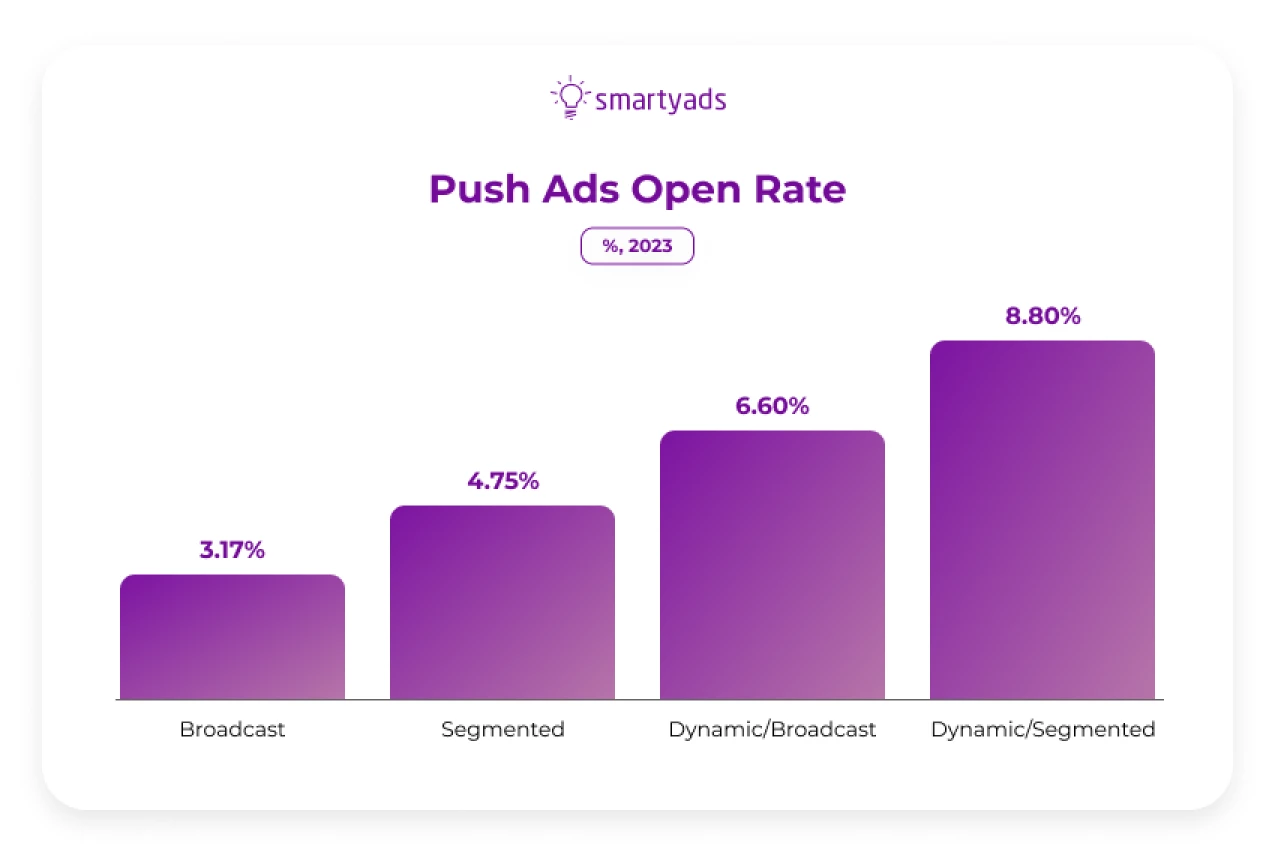
Dynamic push messaging is usually used in campaigns that take into account the interests and demographic data of users. In turn, segmented campaigns receive high open rates since they also involve personalization for every recipient.
5 best verticals of push traffic?
Push traffic is destined to work across all evergreen verticals. At the same time, if you plan to advertise within a very narrow and specific business vertical, it is worth keeping in mind its specifics.
Some industries may generate great traffic volumes during the peak activity seasons and produce humble results when the season is down. Depending on the traffic type and quality, seasonal traffic volume fluctuations results may vary. The only way to even out these factors is to work with multiple push traffic providers at the same time. Meanwhile, here are several examples of the best verticals for advertising push notifications.
E-commerce
E-commerce is one of the most competitive categories; however, it is also among the most evergreen ones, as people tend to shop under virtually any conditions. To attract the attention of customers and drive traffic, consider offering discounts and promo codes, promoting time-limited offers and sales, etc.
Games and technology
People love playing games on any device and tend to look for new consoles and entertainment opportunities. Besides, most of them are interested in technology, trying to get to the most innovative gadgets, software, etc. This vertical is not only stable — it keeps growing.
Antivirus and VPN
More and more users are getting concerned about cybersecurity for all of their devices. This way, within this vertical, you can target virtually everyone. VPN services are another opportunity, as a lot of users need them to access blocked websites or specific content.
Finance
This vertical covers a pretty wide range of subcategories, including insurance, loans, cryptocurrency, etc. Besides, it is not really affected by seasonality, as people care about their insurance and finances all year round.
Health and beauty
This is one of the most evergreen verticals for any type of ads, including push notifications. People never stop caring about their health and appearance. They try to keep fit, eat healthy, and so on. This way, you will access a rather large audience.
Crafting push notifications for affiliate success
Launching push ads can help you drive conversions and income, but you need to prepare them thoroughly. Here are several recommendations for you to consider.
Know your audience and goals
The first thing to do is to identify your goals. What are you going to achieve by launching your campaigns? After answering this question clearly, understand the needs, pain points, and preferences of your target audience. With these insights in mind, you will be able to segment your audience and then tailor notifications to every group.
Work on the copy
Adding visuals to your notifications will help you attract users’ attention, but the text itself should be catchy as well. Remember, you have a very limited space, so come up with short but strong messages that will motivate customers to click the link. When relevant, use emojis, ask questions, create a sense of urgency, etc. At the same time, keep your text tailored to your goals.
Decide on timing and frequency
Just like any other advertising message, your notifications should reach users at the right time. Therefore, consider experimenting with timing to identify the most effective schedule. Besides, keep in mind that most users may get annoyed if they receive your pushes too often. Start small, but then try different frequencies to figure out which option is most suitable for your audience.
Add clear CTAs
It is always helpful to gently tell your customers what to do next, so equip your notifications with strong and clear calls to action. CTA buttons must be easy to notice and click, even on a small screen. Try different colors to make them stand out, and consider creating a sense of urgency when relevant.
Test your pushes
With A/B testing, the open rate for your pushes can increase by more than 55%. Therefore, test your pushes to identify the most effective options. Remember to test only one element at a time — for instance, the copy or color of a CTA button. Otherwise, it will be challenging for you to find out which change affected the performance. Apart from conducting tests, continuously analyze the performance of your campaigns to identify strengths and weaknesses. This will help you create more effective notifications.
Push notification traffic: best use cases
Mobile push notifications traffic sources are especially beneficial for advertisers who strive to automate user-brand communication at every touchpoint. Applying these, you can contact the user at the most appropriate time or create an effective sales funnel that will convert potential customers when they are most inclined to make a purchase. Here is a bunch of examples:

Idea 1. Send out seasonal express sales messages, hot offers, and discounts.
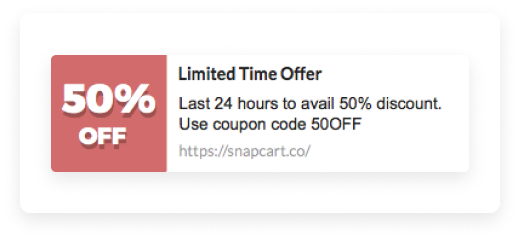
Idea 2. Make updates ‘what’s new in stock.’
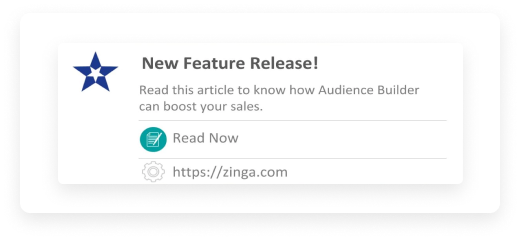
Idea 3. Send push messages with questionnaires to motivate your brand followers to visit.
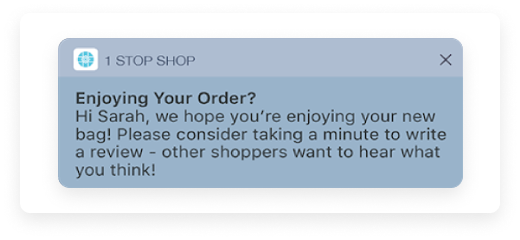
Idea 4. Advertise to your customers when they stay in the vicinity of your shop, at the concert or other topic-related fairs.
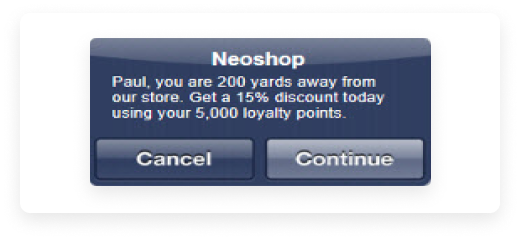
Idea 5. Use push notification messages to remind your customers about abandoned shopping carts.
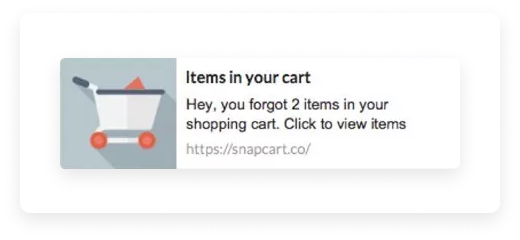
Idea 6. Send out useful information for your customers to educate them and build brand authority.
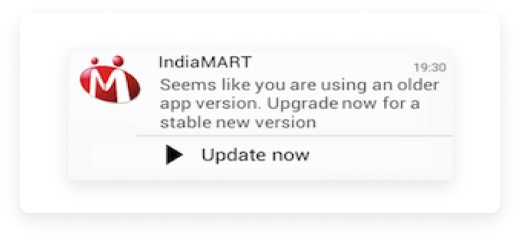
Idea 7. Encourage sales by asking users to support you through social media or by rating your brand. Provide them with a discount in exchange to get better results.
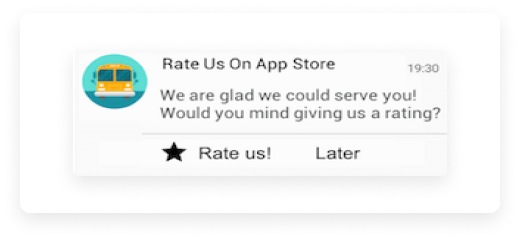
Idea 8. Organize a competition or a lottery that motivates engaged users to visit your shop or win a prize.
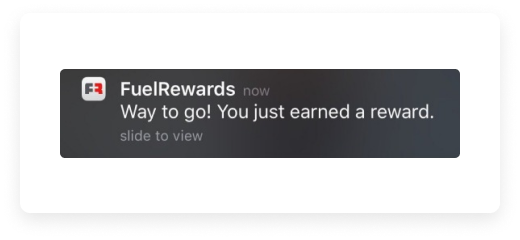
What are the benefits of pushes for advertisers?
As we already found out, push traffic is a high performer in many regards and performance metrics: opt-in rate, CTR, etc. It is time to find out how exactly these tiny ad units manage to reach these results, so let’s review their advantages in more detail.
- Reach. A mobile notification arrives even if the user screen is not active at the moment, which guarantees that potential customers will notice the message no matter what.
- Fraud-free high-quality mobile traffic. Push ad gets directly transmitted to the user whose subscription number is attributed to the device. This eliminates fraud and drives engaged audiences to the app.
- Engagement. Ads can quickly return users to the application or webpage, offer them valuable services, and educate and inspire your audiences with interesting content.
- Personalization. Programmatic advertising helps push ads hit the right customer at the right stage of their customer journey. It allows you to individualize push messages for every customer and raise the likelihood of conversion.
- Automation. All marketing processes can be automated, and purchasing notification traffic is no exception. Demand-side platforms, meanwhile, assist you with targeting audiences depending on geolocation, language, time of activity, OS, browser, IP, or demographic and behavioral data.
- Cost efficiency. Even though push traffic is fairly inexpensive, you have additional opportunities to safeguard your budget from overspending. Setting the frequency capping to “1” will mean that one user will see only one push notification a day.
- Geofencing campaigns. Pushes can work exceptionally well even in brick-and-mortar shops as a part of geofencing campaigns. This function helps you target users on mobile devices according to their geodata, show the ads to passers-by, and encourage them to visit your store. Geo-push notifications are more effective than standard push ads. For instance, the CTR for geofencing notifications on Android is over 13%.
- Improved conversions. Detailed reporting on your advertising platform will help you find the most converting scenarios that work for each audience segment.
Get started with SmartyAds
To boost your advertising campaigns and maximize their performance, you can use not only push notifications. SmartyAds demand-side platform supports the following formats:
- Banner (desktop, mobile web, in-app);
- Video (desktop, mobile web, in-app, CTV);
- Native (desktop, mobile web, in-app);
- Rich media (desktop, mobile web, in-app);
- Audio (desktop, mobile web, in app);
- Digital-out-of-home (outdoor digital displays).
This way, you can target your audience in different environments, including the mobile one. Besides, SmartyAds is not only about the diversity of formats. With extensive targeting capabilities and multiple filters, you will reach exactly those customers who are most likely to convert.
Thanks to the programmatic nature of the platform, the process happens automatically. You only need to set up your campaign; the rest is done by the system, within a second. You will be able to focus on your core tasks, while your ads will reach the most relevant users and drive traffic.
Learn more about SmartyAds DSP and join the world of programmatic advertising.
Final words
Push notifications that for a long time served solely for content delivery now actively conquer the market as a trending ad format. Push ads deliver messages to your customers more effectively than ever: arriving directly to the user screen, they capture the users’ attention in a second. Apart from this, pushes can work well for affiliate marketing campaigns that generate traffic across various business verticals.
At the same time, it would be helpful to combine push notifications with other formats, especially in the mobile environment. Experiment with native, banner, and other types of ads to reach your audience with maximum efficiency.
FAQ
Your push notifications can contain only text or be also equipped with media files and buttons. To identify the most effective format, experiment with different options and continuously analyze your push ads traffic. This way, you will identify the format that suits your audience the best.
To receive mobile push notifications, users first have to enable them on their devices, while standard web notifications (also known as browser pushes) come from websites to which users are subscribed. Monitor the performance of your push advertising campaigns to identify the most effective approach.
In-page push ads look pretty similar to standard push notifications, but actually, they are banner ads displayed on publishers’ websites, and users do not have to subscribe to see them. To reach better results, consider supporting your traditional push campaigns with in-page and other types of ads.
Try multiple ad formats with SmartyAds DSP. Choose the best one and advertise with impact!

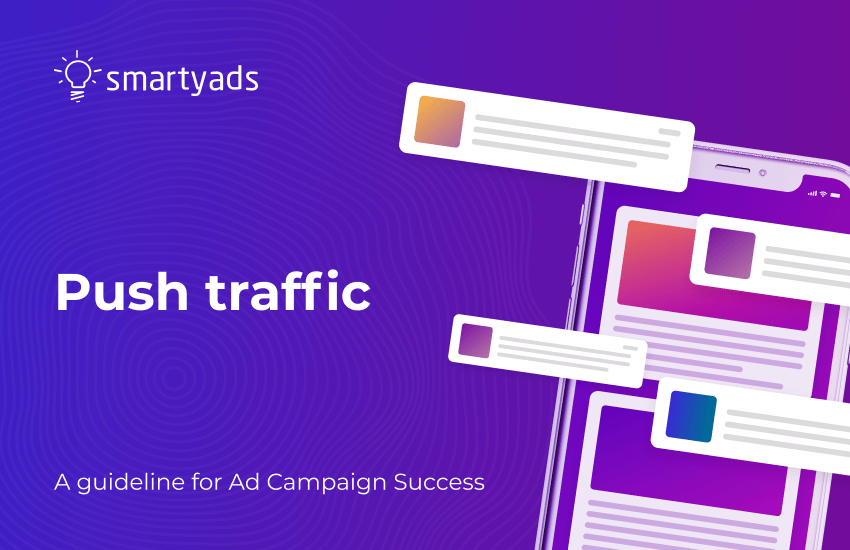


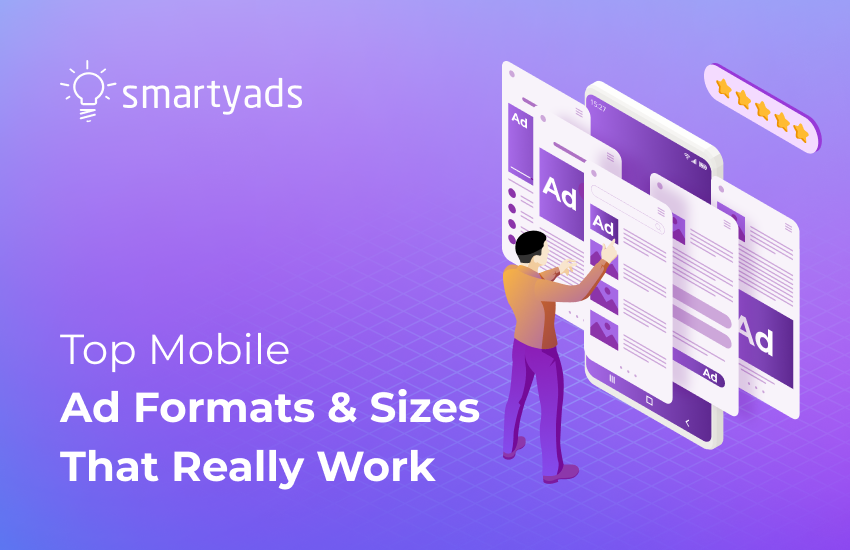
![In-App Advertising: the Complete Guide [Updated 2025]](/storage/uploads/2020/september/in-app-advertising-trends.png)